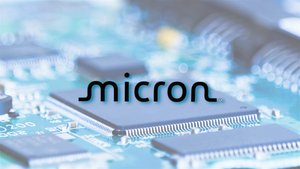Teledyne Labtech, a leading innovator in advanced electronic PCB solutions is spearheading a pioneering Welsh disruptive technology that could revolutionize thermal management in space electronics.
The project, titled Advanced Thermal Management for Space Electronics (ATMS), is a collaborative effort between Teledyne Labtech and Bangor University in Wales, supported by Airbus Endeavr - a joint initiative between Airbus and the Welsh Government. Its goal is to tackle one of the most critical challenges in spacecraft design: managing excess heat in the vacuum of space.
“In space, traditional cooling methods that are reliant on-air circulation, simply don’t work,” said John Priday, Chief Technical Officer of Teledyne Labtech. “Our ATMS project is developing scalable, lightweight, and efficient circuit board technology using synthetic graphite, which has the potential to transform the aerospace sector and supercharge the next stage of the space revolution.”
Unlike copper, which is currently used to conduct heat away from spacecraft components, synthetic graphite offers a lighter and potentially more effective alternative. Teledyne Labtech is focusing on enhancing conduction performance, while Bangor University, the School of Computer Science and Engineering, is advancing the material’s ability to radiate heat into space. The team at Bangor University is using ultrafast laser technology to etch microscopic textures onto the surface of synthetic graphite and other materials, significantly improving their thermal radiation capabilities.
Bangor University is very proud to be part of this incredibly exciting project; by modifying the surface of space-grade materials, we can dramatically improve their ability to emit thermal radiation, paving the way for the next generation of space technology. The implications of this work are profound. Many satellite microprocessors currently operate at only around 50% of their full capacity due to overheating risks. By solving this thermal bottleneck, the ATMS project could unlock higher processing speeds and enable more powerful, efficient spacecraft systems.
“We firmly believe that in our partnership with Bangor University, we’ve found the key to developing this transformative technology,” added Jak Bridges, Sales Manager. “We extend our sincere thanks to Airbus and the Welsh Government for their support in making this vision a reality.”
The ATMS project is scheduled to run until the end of 2026, culminating in prototype demonstrations that will showcase the technology’s potential for future space missions.
ABOUT TELEDYNE LABTECH
Teledyne Labtech has over 40 years of experience as a world leader in microwave circuit design, component manufacturing and testing in the defence, electronics, global telecommunications, space and satellite communications markets. For more information, visit www.teledynelabtech.com.
ABOUT TELEDYNE AEROSPACE & DEFENSE ELECTRONICS
Teledyne Aerospace & Defense Electronics offers a comprehensive portfolio of highly engineered solutions that meet the most demanding requirements, in the harshest environments. Manufacturing both custom and off-the-shelf product offerings, our diverse product lines meet the current and emerging needs of key applications for avionics, energetics, electronic warfare, missiles, radar and surveillance, satellite communications, air and space, and test and measurement. For more information, visit www.teledyneADE.com
View source version on businesswire.com: https://www.businesswire.com/news/home/20250925662861/en/
Our ATMS project is developing scalable, lightweight, and efficient circuit board technology using synthetic graphite, which has the potential to transform the aerospace sector and supercharge the next stage of the space revolution.
Contacts
Media Contact:
Lindsay Petty, Group Marketing Coordinator
Email: Lindsay.petty@teledyne.com





